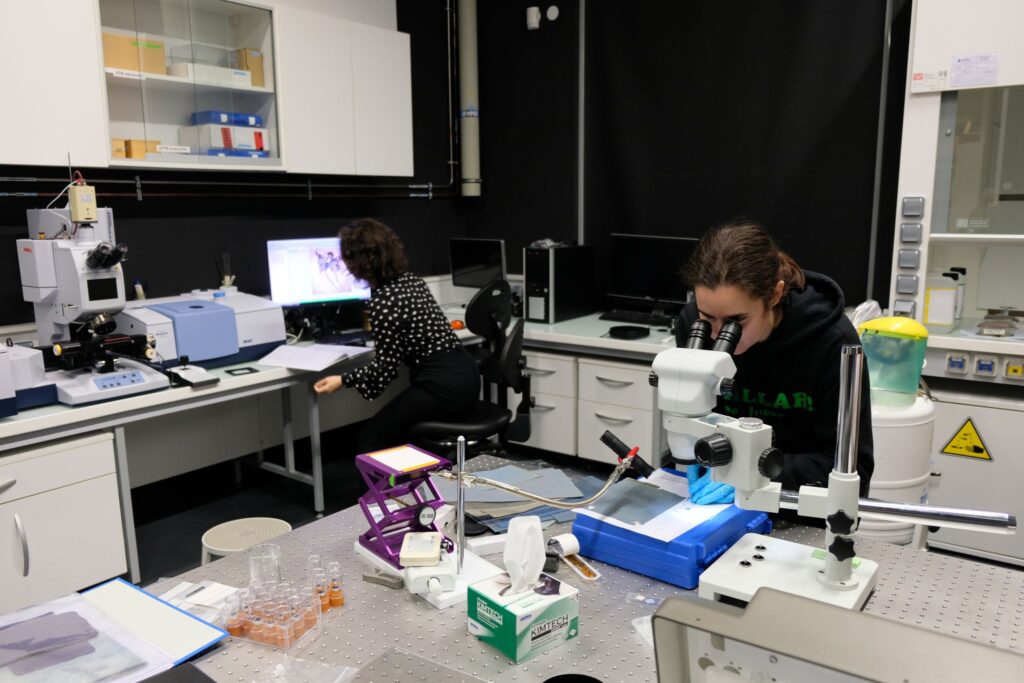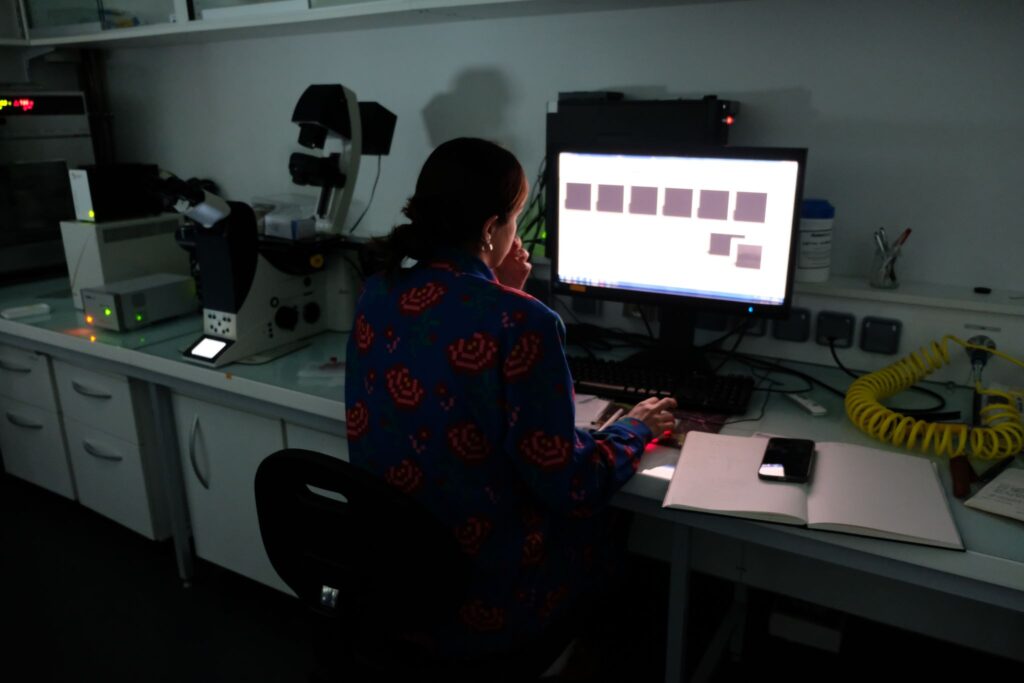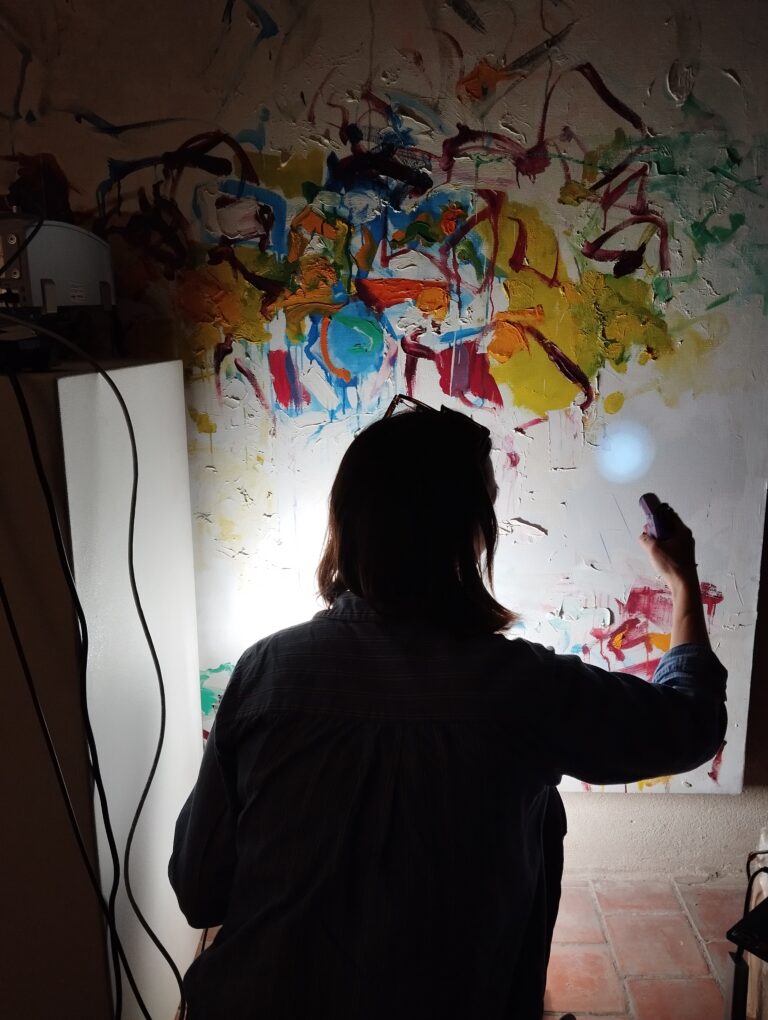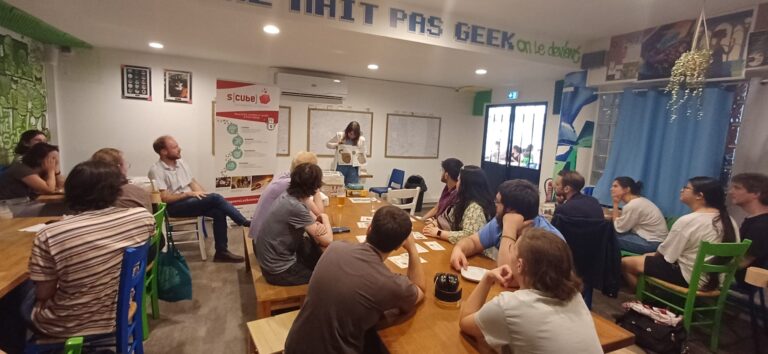[English version below]
Dans le cadre du projet européen IPERION-HS (GA871034) nous avons eu le plaisir de recevoir ces deux dernières semaines deux groupes d’utilisatrices et leur donner accès aux approches d’imagerie disponibles à IPANEMA.
Nous avons d’abord accueilli Leila Sauvage, conservatrice-restauratrice d’oeuvres d’art graphique / chercheuse au Rijksmuseum et maîtresse de conférence à l’université d’Amsterdam, et emeline pouyet, chargée de recherche au CRC, dont le projet porte sur les mécanismes d’altération impliqués dans la décoloration de papiers bleus historiques du XVIIIe et XIXe siècles issus de collections néerlandaises et françaises.
Leur séjour a été suivi par celui de Rafaella Georgiou de l’université de Pise et de l’université de Wiscosin-Madison, venue poursuivre son travail sur l’analyse de systèmes modèles huile-oeuf dans le cadre de son projet de recherche sur la transition de la tempera à la peinture à l’huile au XVe siècle.
Des techniques de microscopie FTIR, de photoluminescence multispectrale, d’imagerie de fluorescence et de diffraction de rayons X ainsi que de la préparation d’échantillon ont été mises en oeuvre afin de contribuer à l’avancement de ces deux projets passionnants.


[EN] Over the past two weeks, as part of the European IPERION-HS project (GA871034), we have had the pleasure of welcoming two groups of users and giving them access to the imaging approaches available at IPANEMA.
First, we welcomed Leila Sauvage, conservator-restorer of works of graphic art / researcher at the Rijksmuseum and lecturer at the University of Amsterdam, and emeline pouyet, research fellow at the CRC, whose project focuses on the alteration mechanisms involved in the discoloration of 18th and 19th century historical blue papers from Dutch and French collections.
Following their stay, Rafaella Georgiou from the University of Pisa and the University of Wiscosin-Madison came to continue her work on the analysis of oil-egg model systems as part of her research project on the transition from tempera to oil painting in the 15th century.
FTIR microscopy, multispectral photoluminescence, fluorescence imaging and X-ray diffraction techniques, as well as sample preparation, were used to help advance these two exciting projects.



